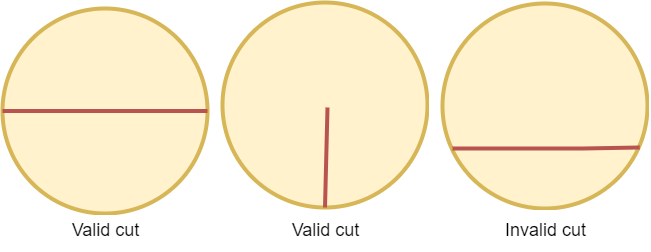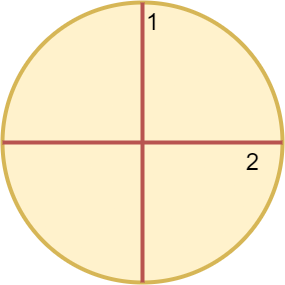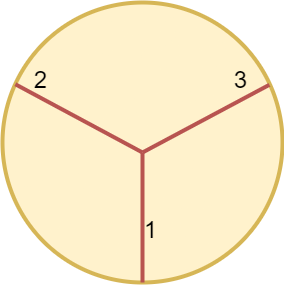2481. Minimum Cuts to Divide a Circle
Description
A valid cut in a circle can be:
- A cut that is represented by a straight line that touches two points on the edge of the circle and passes through its center, or
- A cut that is represented by a straight line that touches one point on the edge of the circle and its center.
Some valid and invalid cuts are shown in the figures below.
Given the integer n, return the minimum number of cuts needed to divide a circle into n equal slices.
Example 1:
Input: n = 4 Output: 2 Explanation: The above figure shows how cutting the circle twice through the middle divides it into 4 equal slices.
Example 2:
Input: n = 3 Output: 3 Explanation: At least 3 cuts are needed to divide the circle into 3 equal slices. It can be shown that less than 3 cuts cannot result in 3 slices of equal size and shape. Also note that the first cut will not divide the circle into distinct parts.
Constraints:
1 <= n <= 100
Solutions
Solution 1: Case Discussion
- When \(n=1\), no cutting is needed, so the number of cuts is \(0\);
- When \(n\) is odd, there is no collinear situation, and at least \(n\) cuts are needed;
- When \(n\) is even, they can be collinear in pairs, and at least \(\frac{n}{2}\) cuts are needed.
In summary, we can get:
\[
\textit{ans} = \begin{cases}
n, & n \gt 1 \textit{ and } n \textit{ is odd} \\
\frac{n}{2}, & n \textit{ is even} \\
\end{cases}
\]
The time complexity is \(O(1)\), and the space complexity is \(O(1)\).
1 2 3 | |
1 2 3 4 5 | |
1 2 3 4 5 6 | |
1 2 3 4 5 6 | |
1 2 3 | |
1 2 3 4 5 6 7 8 | |
1 2 3 4 5 | |





